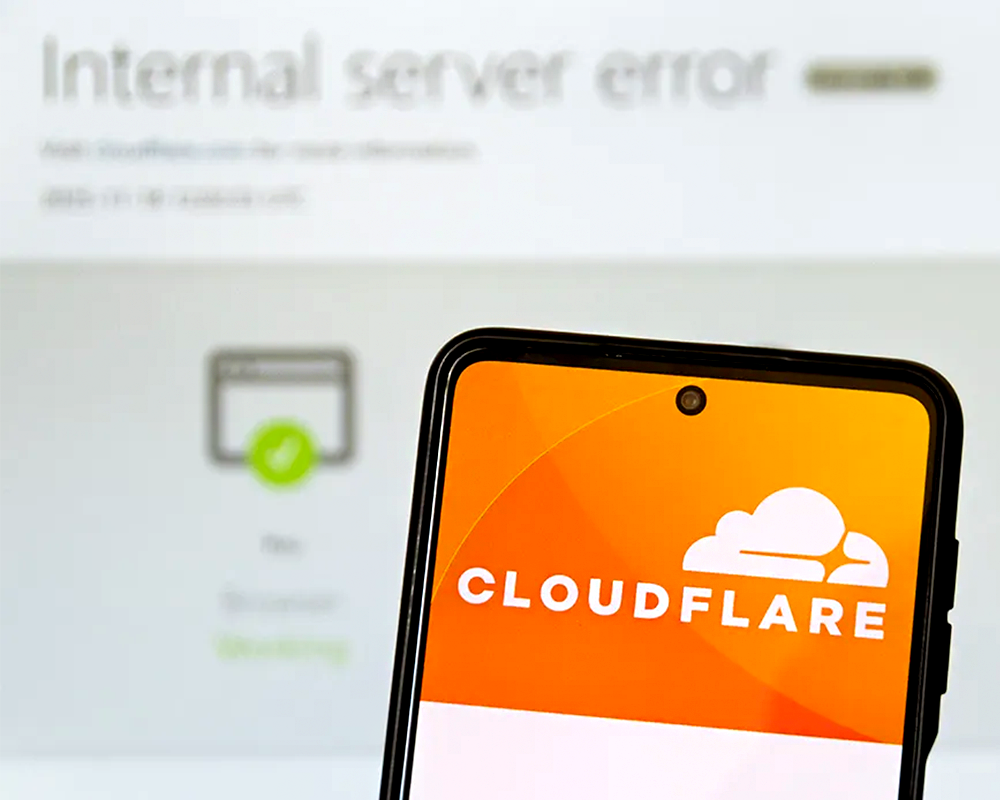November 21, 2025 By: JK Tech
The internet is often perceived to be a collection of apps, websites, and services we use daily, but underneath everything sits a layer of infrastructure that is almost invisible, companies that quietly keep the internet fast, secure, and available. One of the most important of which is Cloudflare, and when Cloudflare ran into trouble, the effects were felt across the world.
Platforms like ChatGPT, X (formerly Twitter), Spotify, Canva, and several others slowed down, threw errors, or stopped loading altogether, sending a sharp reminder of how tightly connected the internet has become.
What Cloudflare Actually Does
Cloudflare is not a social media platform or a search engine; it is part of the internet’s plumbing, something people may not pay heed to but rely on constantly.
Cloudflare’s services include:
-
Content delivery: Helping websites load faster by serving content from locations closer to users.
-
Security: Filtering bad traffic, stopping bots and attacks before they reach a website.
-
Traffic management: Steering internet requests through the best possible paths.
-
DNS support: Acting like one of the many “address books” of the internet.
Because so many websites use Cloudflare for at least one of these services, a problem there can ripple through thousands of platforms simultaneously.
Cloudflare was also in the news a few months ago when it restricted how aggressively AI bots could crawl websites. Many publishers welcomed it as protection from large scale data scraping, highlighting Cloudflare’s quiet power and how it sits between websites and the rest of the internet, shaping what gets through and what doesn’t.
What Went Wrong
The outage came from Cloudflare’s own software, a part of Cloudflare’s system that manages traffic and filters harmful requests encountered a hidden bug. Over time, the configuration file grew larger than expected. When Cloudflare updated its system, this oversized file triggered a software crash.
When that central system stopped working, Cloudflare couldn’t route traffic or filter requests properly, resulting in:
-
Websites relying on Cloudflare showed “site unavailable” errors.
-
Apps that depended on Cloudflare’s network slowed down or refused to load.
-
Services that had nothing to do with Cloudflare’s products still suffered because they relied on platforms that used Cloudflare somewhere in their stack.
The outage lasted several hours before Cloudflare fully restored traffic. This incident highlights something important: the internet works because of shared infrastructure. When one major provider experiences failure temporarily, the consequences spread faster than response.
It isn’t just Cloudflare, a few weeks ago AWS had an outage that broke services worldwide. Google Cloud and Microsoft Azure have had similar moments. These events demonstrate the critical nature of core systems.
For businesses, it’s a reminder that resilience must go beyond their own servers or code.
Lessons for the Future
-
Map Underlying Dependencies Clearly: Many organizations discovered their exposure only after services stopped loading. Even without using Cloudflare directly, critical components such as payment processors, authentication layers, analytics platforms, or AI tools may depend on Cloudflare somewhere in their delivery chain, indicating the pressing need to clearly map out critical factors that run their services.
-
Reassess Reliance on a Single Provider: The outage demonstrates the widespread impact of one infrastructure layer, and the importance of maintaining secondary routes for critical functions or alternative providers helps prevent a complete shutdown during an upstream failure.
-
Design Systems to Degrade Gracefully: Unexpected outages are part of operating in a digital ecosystem. The key is to ensure that services can fall back to limited functionality, such as cached data, reduced features, or an offline mode, rather than failing outright when a third-party dependency becomes unavailable.
-
Rethink Assumptions About Reliability: No cloud or network provider is immune to downtime. The Cloudflare and AWS incident reinforces the importance of including third-party infrastructure failures in business continuity planning and architectural decisions.
Final Thoughts
he Cloudflare outage demonstrates that the internet is an ecosystem, and some parts play a more crucial role than others. Companies like Cloudflare, which operate behind the scenes, support a huge portion of the digital world.
When they stumble, the impact isn’t local; it’s everywhere, and while these incidents are rare, they are powerful reminders that every digital strategy must think beyond features and UX; it must also consider the invisible foundations that quietly hold everything together.



